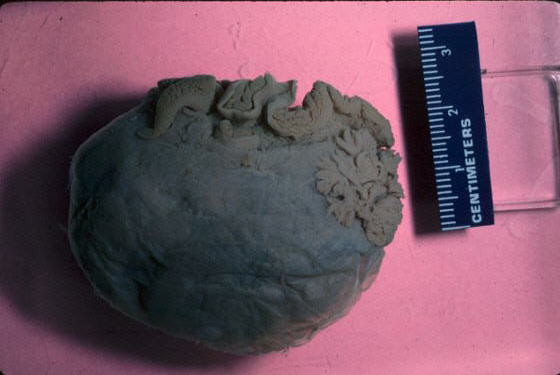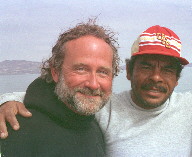 |
Bathydoris aioca
Bathydoris aioca Marcus and Marcus, 1962
Traditionally the Nudibranch of the Week features a full color illustration of a species and its description, along with other biological, historical and interesting information about its various taxonomic meanderings and the humans responsible for them. This week the BOW (our Webmaster Herr Mike Miller continues to call this the "Branch of the Week," hence BOW) features full color photographs of a dead, preserved nudibranch. For the first time in BOW history, you can see what Ludwig Sophius Rudolph Bergh dealt with during his entire career as one of the premier nudibranch nomenclaturists of the 19th century: I believe that he never saw a living nudibranch. If any of you reading this can supply opposing information, please let me know! Regardless, this is the first time that BOW has gone online with a dead photo.
Nearly 40 years ago, one specimen of an undescribed species of Bathydoris was dredged northeast of Isla Guadalupe, Baja California, Mexico. Eveline and Ernst Marcus named it in a Brazilian scientific journal. The only other report of this species in the literature had been by James Lance (who misspelled the species name), who found the holotype specimen squirrelled away in the collections of the California Academy of Sciences.
I was able to obtain nearly a dozen specimens of this species that had been dredged off the Oregon coast by the research vessels Acona and Yaquina. Dr. Ángel Valdés and I published a redescription and range extension of Bathydoris aioca in the April 2000 issue of The Veliger (vol. 43, no. 2).
All specimens known have been collected from approximately 2700-2800 m depth. Preserved total body lengths vary from 15-71 mm. The living coloration is, of course, completely unknown.
The external anatomy is typical for Bathydoris. Because of collection difficulties from these depths, malformations will occur (see the accompanying illustration with the extended buccal mass. The elongate rhinophores have 45 large lamellae alternating with the same number of small ones in a 71 mm specimen. The gill consists of 18 bipinnate branchial leaves in the largest specimen recorded. The anus protrudes posteriorly.
Internal anatomy is clearly and precisely described in the paper; Ángel's marvelous line drawings illustrate features of both external and internal anatomy (including a diagram of this species' brain!--well, okay, the central nervous system; but I still know nudibranchs think a lot about what they are doing). In our paper, scanning electron microscopy shows the distinctive shapes of the radular teeth. We also compare this species of Bathydoris (the only one known from the Pacific Coast of the Americas) with the other recognized species of Bathydoris.
It is probable that the specimens loosely identified (i.e. no anatomy, no species identification, no collection data) as Bathydoris sp. by Belick (1976) whose information was then repeated even more sparsely in the fine print of Table 3 by Goddard, 1984) represent Bathydoris aioca .
LITERATURE CITED
Taxonomic Information photos courtesy of Dr. Hans Bertsch
Assoc. Prof.
Belick, Francis P. 1975 Additional opisthobranch mollusks from oregon. The Veliger 17 (3): 276-277.
Goddard, Jeffrey H.r. 1984. The opisthobranchs of Cape Arago, Oregon, with notes on their biology and a summary of benthic opisthobranchs known from Oregon. The Veliger 27 (2): 143-163.
Lance, James R. 1967. The holotype of the abyssal dorid nudibranch
Bathydoris aoica Marcus & Marcus, 1962. The Veliger 9 (4) 410.
Marcus, Ev. & Er. Marcus. 1962. A new species of the Gnathodoridacea.
Anais da Academia Brasileira de Ciencias 34: 269-275.

Dr. Hans Bertsch
Dept. of Math and Natural Sciences
National University
192 Imperial Beach Blvd. #A
Imperial Beach, CA 91932
FAX (619) 423-9118
Send Hans E-Mail at hansmarvida@cox.net
